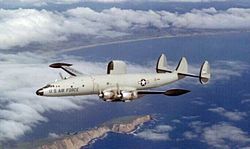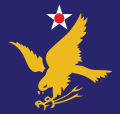965th Airborne Air Control Squadron  | |
|---|---|
 552d Air Control Wing Boeing E-3 Sentry at Tinker AFB | |
| Active | 1943–1944; 1944–1945; 1955–1971; 1978–present |
| Country | |
| Branch | |
| Role | Airborne Command and Control |
| Part of | Air Combat Command |
| Garrison/HQ | Tinker Air Force Base |
| Motto | Semper Vigiles (Latin for 'Always Watchful') |
| Engagements | China-Burma-India Theater Global war on terrorism |
| Decorations | Air Force Outstanding Unit Award with Combat "V" Device Air Force Meritorious Unit Award Air Force Outstanding Unit Award Republic of Vietnam Gallantry Cross with Palm |
| Insignia | |
| 965th Airborne Air Control Squadron emblem [a] [1] |  |
| 965th Airborne Early Warning and Control Squadron emblem [b] [2] |  |
The 965th Airborne Air Control Squadron is part of the 552d Air Control Wing at Tinker Air Force Base, Oklahoma. It operates Boeing E-3 Sentry aircraft conducting airborne command and control missions.
Contents
- Mission
- History
- World War II
- Air defense
- Airborne control
- Lineage
- Assignments
- Stations
- Aircraft
- Awards and campaigns
- References
- Notes
- Bibliography
- External links
The first two antecedents of the squadron were active during World War II. The 595th Bombardment Squadron served as an Operational and Replacement Training Unit, before being inactivated in a general reorganization of Army Air Forces training units. The 165th Liaison Squadron performed special operations in India and Burma from September 1944 until the end of the war, when it returned to the United States for inactivation.
The unit's other predecessor unit was activated in 1955 as the 965th Airborne Early Warning and Control Squadron. It performed air defense patrols off the Pacific coast of the United States until inactivating in 1971. It was activated again at Tinker Air Force Base, Oklahoma in 1978 as the 965th Airborne Warning and Control Squadron,








